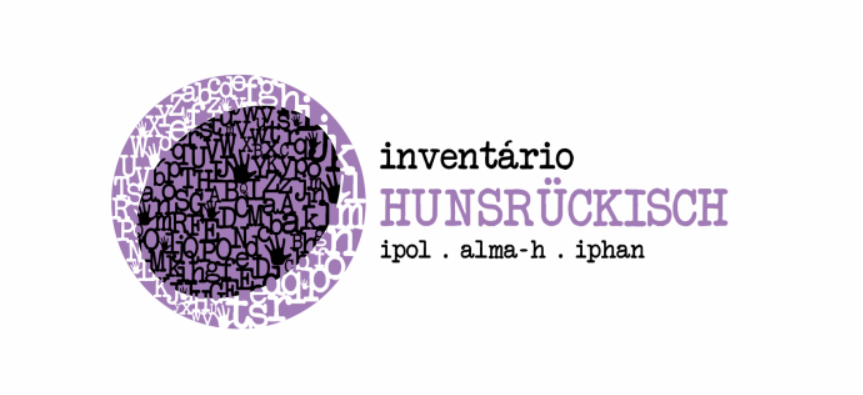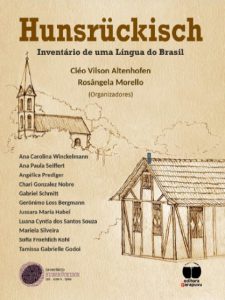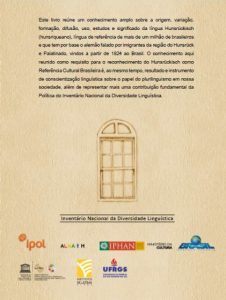Nota de esclarecimento: Falamos e escrevemos o Hunsrückisch!
NOTA DE ESCLARECIMENTO (uff Hunsrückisch)
Mea spreche unn schreiwe Hunsrückisch!
Weche Notícias, wo die Wuch publikeert gebb sinn, iwer en “Hunsrik” Sproch im Google Tradutor, finne mea uns als Pesquisadore unn Sprecher vom “Hunsrückische”, wie mea unser Sproch nenne, gezwung unser Sorche unn Erstaune iwer die Schrift unn der Oot, wie das Ganze gemacht gebb is, zum Ausdruck ze bringe. Was uns noch traurich macht, is, dass debei importante Pesquisas ignoreert gebb sinn, wo der Inventário Nacional von der Sprochdiversitet dorich der IPHAN (Instituto do Patrimônio Histórico e Artístico Nacional) ons Licht gebrung hot ( https://www.gov.br/iphan/pt-br/assuntos/noticias/mais-6-linguas-podem-se-tornar-referencia-cultural-brasileira )
In dem Sinn muss ma soohn, vor allem, dass die Schrift, wo der Google Tradutor verwendt, uff kee Fall unser Schrift vom Hunsrückische representeert, wo dorich der Inventário festgesetzt unn legitimeert gebb is, in en Inventário wo der IPOL (Instituto de Investigação e Desenvolvimento em Política Linguística) unn das Projekt ALMA-H (Sprochkontaktatlas von der Deitsche Minorias in der Bacia do Prata: Hunsrückisch) on der Universidade Federal do Rio Grande do Sul (UFRGS) von 2016 bis 2018 gemacht gebb is (meh dezu unner https://www.ufrgs.br/projalma/escrithu-sistema-de-escrita-do-hunsruckisch/).
Die Schrift, wo ohne Kriterie aleatorisch unner dem Noome Hunsrik verwendt wedd, is en fonetisch Schrift; das Wott “alemão” wedd somit als Taytx geschribb. Im Gecheteel die Schrift, wo dorich der Inventário vom Hunsrückische aproveert gebb is, heert der Tradition unn dem Schreiwe von Imigrante unn dene sein Nohkommenschaft iwer die 200 Johre in Brasilie (in dem Johr mit en Heerd Atividades gedenkt); das Wott for “alemão” schreibt ma uff der Oot als Deitsch. Der Diálogo mit der Herkunft unn mit der eichne Identitet is ausserondlich central for die Sprecher vom Hunsrückische, well dodemit erlaubt wedd, ooch annre Atikle von unser Kultur mitzerechne, wie, for em Beispiel ze gewwe, die Verschriftung von Schreibnoome zeicht (em Beispiel is das ooch in viele Noome wie Schneider, Einstein unn so weiter). Das heesst, das Festsetze von der Schrift im Inventário hot sich aus dem Diálogo mit der Sprecher unn ehr Geschicht ergebb, also net vom Ausland renn, wie die Schrift, wo im Google Tradutor verwendt wedd.
Der Oot, wie so das Hunsrik im Google Tradutor uffgenomm gebb is, ohne der Inventário vom Hunsrückische iwerhaupt ze erkenne, ohne die Sprecher unn Gemeende onzeheere unn ohne die Oorwet vom IPHAN mit der Parceria von der Gesellschaft for die bresilioonisch Sprochediversitet ze erkenne unn erhalle, stosst also derekt geche alles, was mit gross Mih gemacht gebb is, for das Hunsrückische ze erhalle unn ze schitze.
Ma muss noch soohn, dass der Inventário vom Hunsrückische, zu dem en Parecer Técnico im Diário Oficial da União vom 05.07.2022, ed. 125, seção 3, p. 127 rausgebb is, en importante Beweis is, for das Hunsrückische der Certificado als “referência cultural brasileira” ze kriehn. Das is uns vom IPHAN noch eenmol besteticht gebb, in en Reunião vom 12.07.2024. Debei is uns ooch gesichert gebb, dass der Certificado noch das Johr ausgestellt werre kann.
Mea hoffe zum Schluss, dass hiermit besser verstann wedd, wie ennst die Stuation is. Es hannelt sich um die Mottersproch von en Heerd Leit unn ehr Geschicht, wo net eenfach von en eenzich Aktion decidiert werre kann. Es solte die Interesse von der Sprecher zehle, well for die Hunsrückisch en Erebsproch is. Ma muss dem Google desweche vorschloohn, das Insetze von neie Sproche im Google Tradutor besser ze kontroleere, unn die Sicht von der viele Sprecher sowie ooch die Politik vom Inventário Nacional von der Sprochdiversitet ennst ze nehme, wo en important Institution wie der IPHAN unnerstizt hot, uff der Basis grood von ennst Dokumentation unn Zustimmung von der Sprecher.
Es danke for das Zuheere
Cléo V. Altenhofen (Projeto ALMA-H / UFRGS, Instituto de Letras)
Rosângela Morello (IPOL – Instituto de Investigação e Desenvolvimento em Política Linguística)
.
NOTA DE ESCLARECIMENTO:
Falamos e escrevemos o Hunsrückisch!
Em virtude de notícias que têm sido veiculadas nesta semana, referindo-se à inclusão de uma língua Hunsrik, no Google Tradutor, viemos manifestar nossa surpresa e preocupação, como pesquisadores e falantes do Hunsrückisch, com o sistema de escrita usado e o modo como se deu esse processo de inclusão, ignorando trabalhos relevantes no âmbito do Inventário Nacional da Diversidade Linguística (https://www.gov.br/iphan/pt-br/assuntos/noticias/mais-6-linguas-podem-se-tornar-referencia-cultural-brasileira), conforme concebido pelo IPHAN (Instituto do Patrimônio Histórico e Artístico Nacional).
Nesse sentido, cabe esclarecer, antes de tudo, que a escrita usada no Google Tradutor não representa de modo algum a escrita definida e legitimada como escrita usual do Hunsrückisch, por meio do Inventário que o IPOL (Instituto de Investigação e Desenvolvimento em Política Linguística) e o projeto ALMA-H (Atlas Linguístico-Contatual das Minorias Alemãs na Bacia do Prata: Hunsrückisch), da Universidade Federal do Rio Grande do Sul (UFRGS), realizaram entre 2016 e 2018 (v. https://www.ufrgs.br/projalma/escrithu-sistema-de-escrita-do-hunsruckisch/)
A escrita usada nessa inclusão aleatória do que se chama Hunsrik é fonética; por exemplo, para a palavra ‘alemão’, escreve-se a forma Taytx. Em contrapartida, a escrita aprovada no Inventário do Hunsrückisch dialoga com a tradição e as práticas de escrita dos imigrantes e seus descendentes ao longo dos 200 anos de presença no Brasil (rememorados em uma série de atividades deste ano de 2024); a palavra equivalente a ‘alemão’ é escrita, por isso, como Deitsch. Esse diálogo com as raízes e a identidade local é central para os falantes de Hunsrückisch, pois possibilita alinhar as práticas de escrita com outros setores da cultura, como por exemplo mostra a grafia de sobrenomes (neste caso, com o mesmo grafema em Schneider, Einstein etc.). Ou seja, a definição do sistema de escrita, no âmbito do Inventário, deu-se em diálogo com as comunidades, e não foi artificialmente introduzido de fora para dentro, como no caso da escrita do Google Tradutor.
A inserção, de forma aleatória, da língua Hunsrik no Google Tradutor, sem consideração do Inventário do Hunsrückisch, em que se fez ampla consulta e pesquisa junto às comunidades de falantes, e que representa um esforço do IPHAN, junto com a sociedade, para reconhecer e salvaguardar a diversidade linguística brasileira, se choca, portanto, com os esforços legitimamente empreendidos para a manutenção e salvaguarda do Hunsrückisch.
Vale acrescentar que o Inventário do Hunsrückisch, com parecer técnico publicado no DOU de 05/07/2022, ed. 125, seção 3, p. 127, é requisito essencial para o Hunsrückisch obter o certificado de “referência cultural brasileira”. Essa postura foi corroborada em reunião realizada com o IPHAN, no último dia 12/07/2024, em que se acenou com a concessão do certificado ainda este ano.
Esperamos, enfim, que esta nota esclareça a situação, pois a língua materna de toda uma comunidade e de sua história não pode ficar à mercê de uma decisão isolada, motivada por interesses que não os dos falantes, para quem o Hunsrückisch constitui uma língua de herança. Caberia, por isso, alertar ao Google, para rever o processo de inclusão de línguas no Google Tradutor, sem ferir ou passar por cima da visão das comunidades de falantes e da política do Inventário Nacional da Diversidade Linguística, conduzida por um órgão extremamente importante como o IPHAN, que ampara suas ações justamente na documentação e anuência das comunidades.
Att.
Cléo V. Altenhofen (Projeto ALMA-H / UFRGS, Instituto de Letras)
Rosângela Morello (IPOL – Instituto de Investigação e Desenvolvimento em Política Linguística)
DISCLAIMER:
We speak and write Hunsrückisch!
As a result of the news that has been published this week, referring to the inclusion of a Hunsrik language in Google Translate, we would like to express our surprise and concern, as researchers and speakers of Hunsrückisch, about the writing system used and how this process of inclusion has taken place, ignoring relevant work within the scope of the National Inventory of Linguistic Diversity (https://www.gov.br/iphan/pt-br/assuntos/noticias/mais6-linguas-podem-se-tornar-referencia-cultural-brasileira), as conceived by IPHAN (Institute of National Historical and Artistic Heritage).
First and foremost, it should be clarified that the writing used in Google Translate in no way represents the writing defined and legitimized as the usual writing of Hunsrückisch, through the Inventory that IPOL (Institute for Research and Development in Linguistic Policy) and the ALMA-H project (Linguistic-Contact Atlas of German Minorities in the River Plate Basin: Hunsrückisch), of the Federal University of Rio Grande do Sul (UFRGS), carried out between 2016 and 2018 (see https://www.ufrgs.br/projalma/escrithu-sistema-de-escrita-do-hunsruckisch/).
The writing used in this random inclusion of what is called Hunsrik is phonetic; for example, for the word ‘German’, the form Taytx is written. On the other hand, the writing approved in the Hunsrückisch Inventory dialogues with the tradition and writing practices of immigrants and their descendants over the 200 years of their presence in Brazil (commemorated in a series of activities in 2024); the word equivalent to ‘German’ is therefore written as Deitsch. This dialogue with roots and local identity is central to Hunsrückisch speakers, as it makes it possible to align writing practices with other sectors of culture, as, for example, the spelling of surnames shows (in this case, with the same spelling <ei> in Schneider, Einstein, etc.). The definition of the writing system, in the context of the Inventory, took place in dialogue with the communities and was not artificially introduced from outside, as in the case of the Hunsrik writing now present in Google Translate.
The random inclusion of the Hunsrik language in Google Translate, without taking into account the Hunsrückisch Inventory, in which there was extensive consultation and research with the communities of speakers, and which represents an effort by IPHAN, together with society, to recognize and safeguard Brazilian linguistic diversity, therefore clashes with the efforts legitimately undertaken to maintain and protect this language.
Furthermore, the Hunsrückisch Inventory, with a technical opinion published in the DOU of 05/07/2022, ed. 125, section 3, p. 127, is an essential requirement for Hunsrückisch to obtain the certificate of “Brazilian cultural reference”. This stance was corroborated at a meeting held with IPHAN on July 12, 2024, in which the certificate was expected to be granted this year.
Finally, we can only hope that this disclaimer clarifies the situation since the mother tongue of an entire community and its history cannot be at the mercy of an isolated decision, motivated by interests other than those of the speakers, for whom Hunsrückisch is a heritage language. It would therefore be appropriate to alert Google to review the process of including languages in Google Translate, without hurting or bypassing the vision of the communities of speakers and the policy of the National Inventory of Linguistic Diversity, conducted by a body as important as IPHAN, which bases its actions precisely on the documentation and consent of the communities.
Sincerely,
Cléo V. Altenhofen (Projeto ALMA-H / UFRGS, Instituto de Letras)
Rosângela Morello (IPOL – Instituto de Investigação e Desenvolvimento em Política Linguística)
Nova versão eletrônica do livro “Hunsrückisch: Inventário de uma Língua do Brasil”, confira!
A nova versão eletrônica do livro “Hunsrückisch: Inventário de uma Língua do
Brasil”, editada no ano de 2022, incorpora um encarte com imagens da pesquisa de
campo intitulado “Os personagens, os lugares e bastidores do dia a dia da pesquisa.
Encontros com a língua e a memória”. E ainda, retifica a lista de autores, com a
inclusão de Chari Gonzalez Nobre e Mariela Silveira.
ALTENHOFEN, Cléo V.; MORELLO, Rosângela; BERGMANN, Gerônimo L.; GODOI, Tamissa G.; HABEL, Jussara M.; KOHL, Sofia F.; NOBRE, Chari G.; PREDIGER, Angélica; SCHMITT, Gabriel; SEIFFERT, Ana Paula; SILVEIRA, Mariela F.; SOUZA, Luana C.; WINCKELMANN, Ana C. Hunsrückisch: inventário de uma língua do Brasil. Florianópolis: Garapuvu, 2022. 248 p.
Baixe o pdf do livro aqui.
Convite para as comemorações da Semana das Etnias edição 2019 em Caixias do Sul, RS
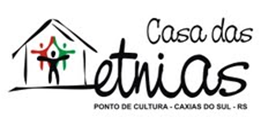 Dentro das comemorações da Semana das Etnias edição 2019, lhe fazemos um convite para um tema especial:
Dentro das comemorações da Semana das Etnias edição 2019, lhe fazemos um convite para um tema especial:
Plurilinguismo: valores e perspectivas.
Será em Caxias do Sul, no Ponto de Cultura Casa das Etnias ( Av. Independência 2542, Bairro Panazzolo, Junto ao Centro de Cultura Ordovás, atrás do FORUM). Continue lendo
A herança da imigração na fala do brasileiro
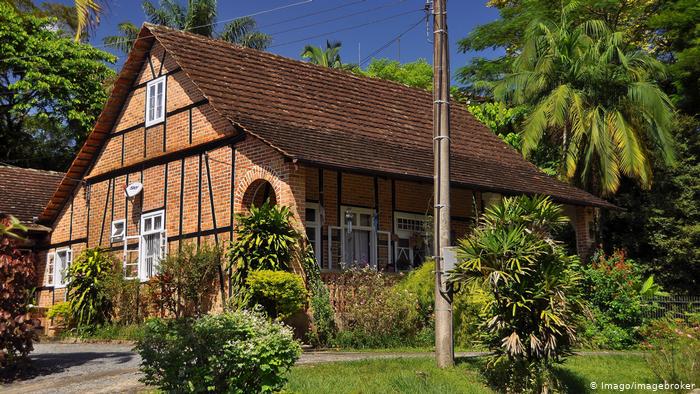 Estima-se que ainda estejam em uso no Brasil mais de 50 línguas de imigração, muitas delas trazidas por europeus a partir do início do século 19. Contato com português resultou em variações como talian e hunsriqueano.
Estima-se que ainda estejam em uso no Brasil mais de 50 línguas de imigração, muitas delas trazidas por europeus a partir do início do século 19. Contato com português resultou em variações como talian e hunsriqueano.
Nascido no Rio Grande do Sul, o biólogo Piter Kehoma Boll entrou em contato com a língua portuguesa somente na idade escolar. Continue lendo
Município de Ipira promove IV Encontro de Falantes do Hunsrückisch
 Ipira promoveu no sábado 22/06/2019, o IV Encontro de Falantes de Hunsrückisch. Numa parceria do IPOL – Instituto de Investigação e Desenvolvimento em Política Linguística, Universidade Federal do Rio Grande do Sul (UFRGS), Instituto de Letras / Área de Língua Alemã e Programa de Pós-Graduação em Letras, o evento que tem o objetivo reunir falantes e gestores da língua Hunsrückisch interessados no conhecimento e salvaguarda como patrimônio cultural imaterial. Continue lendo
Ipira promoveu no sábado 22/06/2019, o IV Encontro de Falantes de Hunsrückisch. Numa parceria do IPOL – Instituto de Investigação e Desenvolvimento em Política Linguística, Universidade Federal do Rio Grande do Sul (UFRGS), Instituto de Letras / Área de Língua Alemã e Programa de Pós-Graduação em Letras, o evento que tem o objetivo reunir falantes e gestores da língua Hunsrückisch interessados no conhecimento e salvaguarda como patrimônio cultural imaterial. Continue lendo
IV Encontro de Falantes do Hunsrückisch

No dia 22 de junho acontecerá na cidade de Ipira, Santa Catarina, o IV Encontro de Falantes do Hunsrückisch. Continue lendo
